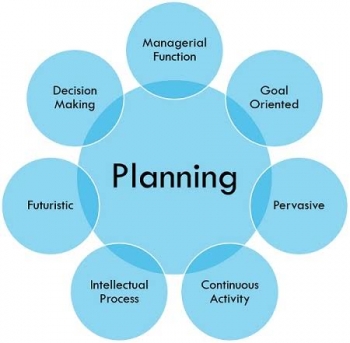News And PoliticsReligion And PrinciplesSocial SciencesAgricultureCommunications And EntertainmentHealth And LifestyleArts And EducationSports And FitnessRelationship And MarriageOthersNigeriapoliticsVehicles And MobilityEngineeringPersonal Care And BeautyScience And TechnologyIT And Computer ScienceFood And Kitchen
profile/5309IMG_20181126_191303.jpg
Ematy1

CREATIVITY AND BRAINWORK
~2.3 mins read
NEUROECONOMIC FRAMEWORK FOR CREATIVE COGNITION
Lin and Vartanian developed a framework that provides an integrative neurobiological description of creative cognition. This interdisciplinary framework integrates theoretical principles and empirical results from neuroeconomics, reinforcement learning, cognitive neuroscience, and neurotransmission research on the locus coeruleus system. It describes how decision-making processes studied by neuroeconomists as well as activity in the locus coeruleus system underlie creative cognition and the large-scale brain network dynamics associated with creativity. It suggests that creativity is an optimization and utility-maximization problem that requires individuals to determine the optimal way to exploit and explore ideas (multi-armed bandit problem). This utility maximization process is thought to be mediated by the locus coeruleus system and this creativity framework describes how tonic and phasic locus coerulues activity work in conjunction to facilitate the exploiting and exploring of creative ideas. This framework not only explains previous empirical results but also makes novel and falsifiable predictions at different levels of analysis (ranging from neurobiological to cognitive and personality differences).
CREATIVITY QUOTIENT
There was a creativity quotient developed similar to the intelligence quotient (IQ). It makes use of the results of divergent thinking tests (see below) by processing them further. It gives more weight to ideas that are radically different from other ideas in the response.
PSYCHOMETRIC APPROACH
J. P. Guilford's group, which pioneered the modern psychometric study of creativity, constructed several tests to measure creativity in 1967.
Plot Titles, where participants are given the plot of a story and asked to write original titles.
Quick Responses is a word-association test scored for uncommonness.
Figure Concepts, where participants were given simple drawings of objects and individuals and asked to find qualities or features that are common by two or more drawings; these were scored for uncommonness.
Unusual Uses is finding unusual uses for common everyday objects such as bricks.
Remote Associations, where participants are asked to find a word between two given words (e.g. Hand Call)
Remote Consequences, where participants are asked to generate a list of consequences of unexpected events (e.g. loss of gravity)
Originally, Guilford was trying to create a model for intellect as a whole, but in doing so also created a model for creativity. Guilford made an important assumption for creative research: creativity isn't one abstract concept. The idea that creativity is a category rather than one single concept opened up the ability for other researchers to look at creativity with a whole new perspective.
Additionally, Guilford hypothesized one of the first models for the components of creativity. He explained that creativity was a result of having:
Sensitivity to problems, or the ability to recognize problems;
Fluency, which encompasses
a. Ideational fluency, or the ability rapidly to produce a variety of ideas that fulfill stated requirements;
b. Associational fluency, or the ability to generate a list of words, each of which is associated with a given word;
c. Expressional fluency, or the ability to organize words into larger units, such as phrases, sentences, and paragraphs;
Flexibility, which encompasses
a. Spontaneous flexibility, or the ability to demonstrate flexibility;
b. Adaptive flexibility, or the ability to produce responses that are novel and high in quality.
profile/5309IMG_20181126_191303.jpg
Ematy1

PLANNING IN PROCESSES
~1.7 mins read
Planning is the process of thinking about the activities required to achieve a desired goal. It is the first and foremost activity to achieve desired results. It involves the creation and maintenance of a plan, such as psychological aspects that require conceptual skills. There are even a couple of tests to measure someone’s capability of planning well. As such, planning is a fundamental property of intelligent behavior. An important further meaning, often just called "planning", is the legal context of permitted building developments.
Also, planning has a specific process and is necessary for multiple occupations (particularly in fields such as management, business, etc.). In each field there are different types of plans that help companies achieve efficiency and effectiveness. An important, albeit often ignored aspect of planning, is the relationship it holds to forecasting. Forecasting can be described as predicting what the future will look like, whereas planning predicts what the future should look like for multiple scenarios. Planning combines forecasting with preparation of scenarios and how to react to them. Planning is one of the most important project management and time management techniques. Planning is preparing a sequence of action steps to achieve some specific goal. If a person does it effectively, they can reduce much the necessary time and effort of achieving the goal. A plan is like a map. When following a plan, a person can see how much they have progressed towards their project goal and how far they are from their destination.
Planning is one of the executive functions of the brain, encompassing the neurological processes involved in the formulation, evaluation and selection of a sequence of thoughts and actions to achieve a desired goal. Various studies utilizing a combination of neuropsychological, neuropharmacological and functional neuroimaging approaches have suggested there is a positive relationship between impaired planning ability and damage to the frontal lobe.
A specific area within the mid-dorsolateral frontal cortex located in the frontal lobe has been implicated as playing an intrinsic role in both cognitive planning and associated executive traits such as working memory.
Disruption of the neural pathways, via various mechanisms such as traumatic brain injury, or the effects of neurodegenerative diseases between this area of the frontal cortex and the basal ganglia, specifically the striatum (cortico-striatal pathway), may disrupt the processes required for normal planning function.
Individuals who were born Very Low Birth Weight (
Advertisement

Link socials
Matches
Loading...
